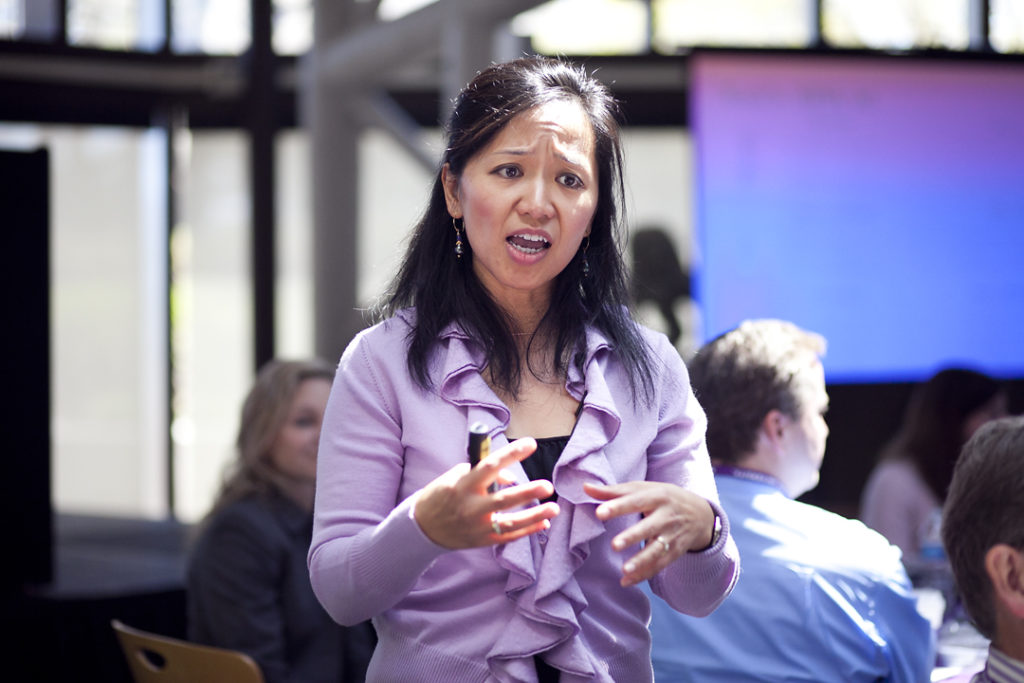August 4, 2015 / Esther Choy

Masterful storytellers intentionally coordinate their body language with their story. Photo by Eddie Quinones.
Many years ago, I was having a weekly meeting with my boss. What I thought was a routine conversation quickly changed when he suddenly slapped his pen down on the conference table and yelled, “Esther, what the —- is wrong?!”
Stunned, I hesitated for a few seconds and returned the question back to him. “…Nothing… Why?”
“That frown!” he pointed at my face. “If you have something to say, something you disagree with, you need to speak up!” He went on for a few more minutes about teamwork and open communication. But I left the meeting feeling even more frustrated and confused.
Thanks to time, feedback and reflection, I eventually understood what my former boss meant by “what the —- was wrong.” Apparently, I frowned a lot; but I didn’t realize it. Other colleagues and my spouse have told me that frowning is pretty much my permanent look whenever I am working in front of a computer.
For some reasons, frowning helped me think better (and still does). Adding my furrowed eyebrows to the fact that I didn’t tend to speak until I had something valuable to say, my boss was left with looking at a face like this most of the time during meetings. No wonder he couldn’t take it anymore!
Have you encountered colleagues, families, audiences who just… “don’t get it?” It might have something to do with your body language.
Why Body Language Matters
Many studies have found that interpersonal communication is made up of mostly non-verbal cues (anywhere from 70% – 90%+). What your body is doing carries a much louder signal than the words you utter. Therefore, mindful storytellers notice how their non-verbal is helping or distracting from their stories. Masterful storytellers, however, intentionally coordinate their body language with their story.

How To Use Body Language Effectively
You can take a multi-week course on body language, but you may not have the time. So here are three simple and effective way to become a masterful storyteller.
-
Head. What gets communicated through our heads? Plenty! Eye contact, head position and tone of your voice. Each of the three should complement the peaks and valleys of your story.
-
Hands. The position of our hands can attract audience or distract them from our story or from us as the storyteller. The communication expert, Allan Pease, has a brilliant TED talk about the immense difference that palms-up, palms-down and finger-pointing can have on audiences’ receptiveness to our message. In short, always palms-up!
-
Distance from audience. When telling stories, the storyteller doesn’t have to be fixed to one position. Of course, avoiding aimless back and forth pacing would be a good idea too. Plan the distance between you and your audiences to get your point across strategically and yet subtly.
After that encounter with my former boss many years ago, I stood in front of a mirror and practiced thinking without frowning. It took awhile, but the benefit has been immense. After all, I would much rather stare at my neutral look than my frowning look!
Better Every Story
Leadership Transformation through Storytelling
"This is an amazing and insightful post! I hadn’t thought of that so you broadened my perspective. I always appreciate your insight!" - Dan B.
Get Esther Choy’s insights, best practices and examples of great storytelling to your inbox each month.


